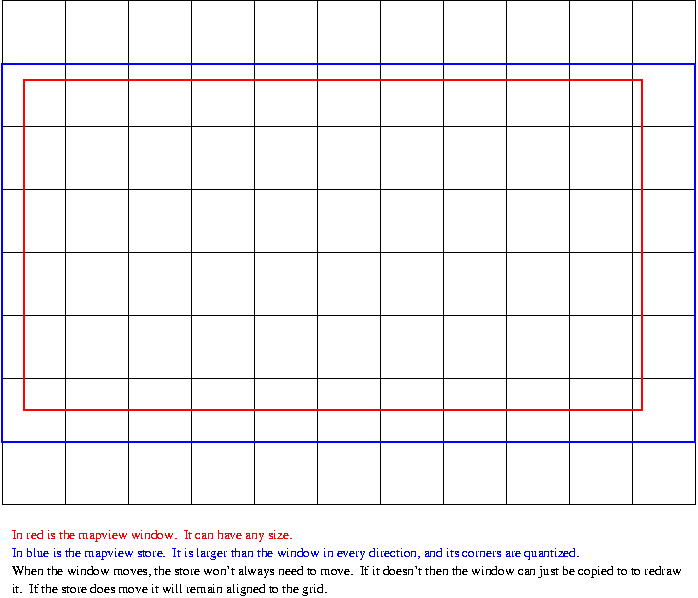[Freeciv-Dev] (PR#9105) one final mapview optimization
[Top] [All Lists]
[Date Prev][Date Next][Thread Prev][Thread Next][Date Index] [Thread Index]
<URL: http://rt.freeciv.org/Ticket/Display.html?id=9105 >
There is one more mapview optimization that would give further speedups
that will potentially really help with small scrolls (like gui-fs's
grab-and-drag scrolling or a sliding mapview).
[In the below explanation I talk only about width. However the exact
same thing applies to height.]
Currently the mapview has a canvas store that is slightly independent
from the mapview window itself. The canvas store has a quantized width
that is a multiple of NORMAL_TILE_WIDTH, so when resizing the mapview
window a new store is only sometimes needed. When updating a tile
(e.g., the return value of map_to_canvas_pos) it must be updated
anywhere on the store, not just on the window. However when checking to
see if a tile is in the interior region (e.g.,
tile_visible_and_not_on_border_mapcanvas) we're only concerned about the
mapview window.
So much for background. The thing is that when you move the mapview, it
must have some tiles redrawn. In the old days if you recentered it by 1
pixel the entire mapview would have to be redrawn - unusably slow. Now
if you recenter it by one pixel to the right just that one column of
pixels must be redrawn. Of course this necessitates the redrawing of an
entire column of tiles, and in iso-view this means two columns of tiles.
It's still slower than it could be.
Now for the next level of optimization. Start by taking a look at the
attached .png and .fig files.
I think the next level of optimization is to add extra padding to the
store on the left as well as on the right. We can then quantize the
resolution of gui_x0. We start by having a
#define QUANTA (NORMAL_TILE_WIDTH / (is_isometric ? 2 : 1))
which can be tweaked later to give optimal results. Now both sides of
the mapview store must be aligned to this grid. So if the _window_ has
origin (gui_x0) and right edge (gui_x0 + width = gui_x1), the _store_
will have origin FLOOR(gui_x0 / QUANTA) * QUANTA and right edge
(approximately) CEIL(gui_x1 / QUANTA) * QUANTA.
When the mapview scrolls, if it remains inside the store no redrawn need
be done. In this case we just have to copy the store to the mapview.
However if the window moves outside of the store then we must move the
store. The width remains the same, and we just move the origin.
With the QUANTA shown above, no additional drawing will be required for
updates. Any tile that is on the store would be on the window anyway -
the difference is that is't now all the way on the store, so it won't
have to be redrawn if we move just a pixel or two. With a larger QUANTA
some extra redrawing is needed for updates, but it may still be faster
because less redrawing is needed for scrolling.
jason


| [Prev in Thread] |
Current Thread |
[Next in Thread] |
- [Freeciv-Dev] (PR#9105) one final mapview optimization,
Jason Short <=
|
|